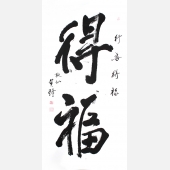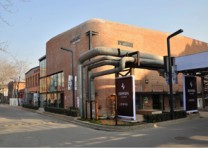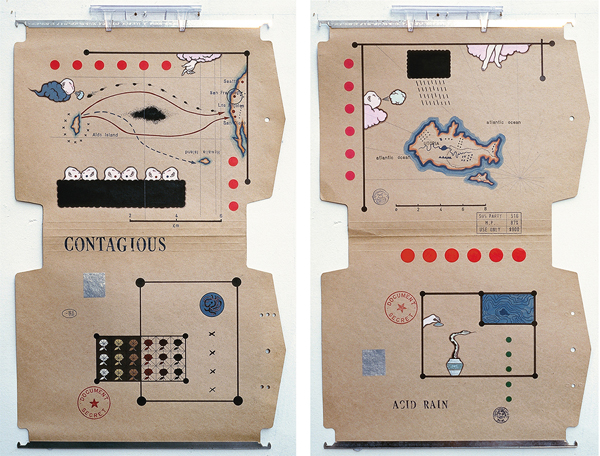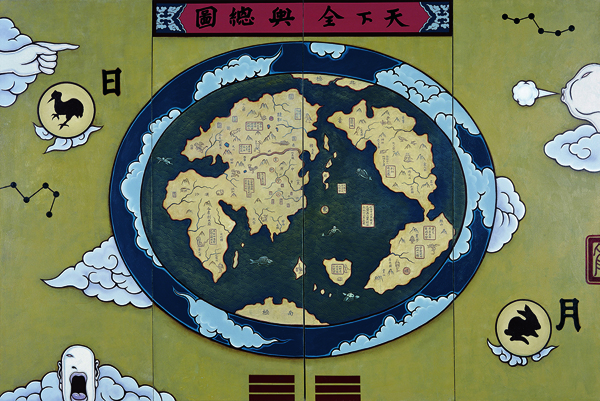- 资质:
- 评分:
1分 2分 3分 4分 5分 6分 7分 8分 9分 10分 7.1分
- 印象:
- 经营时间:16年
- 展厅面积:840平米
- 地 区:北京-朝阳
世界观
- 展览时间:2017-01-14 - 2017-04-16
- 展览城市:北京-朝阳
- 展览地点:白盒子艺术馆
- 策 展 人:盛葳
- 参展人员:
展览介绍
作为白盒子艺术馆2017年首次展览,由盛葳策划的“世界观:关伟个展”将于1月14日开幕,展期将跨越春节,至2017年3月1日。
关伟是较早移民澳洲的当代艺术家,常年两地生活和工作的经历成为他创作的主要切入口,他的创作主题和工作状态有着强烈的“间性”(in-between)。从一个中国的角度看待世界,或者以一种全球的眼光审视中国,构筑了关伟的基本视点。
白盒子艺术馆中厅和两个侧厅的建筑内空间,就像中国古代家族祭祀的祠堂。从天到地,从外到内,从上到下,从宏观到微观,关伟的“世界观”在美术馆中的叙事渐次展开。关伟发明了一套属于自己的“星相学”,在中国和西方古代的星相系统之间游走,为杂乱的浩瀚宇宙定义出有序的规则;与此同时,关伟绘制了人类世界的全景地图,这些地图先于地理,重新建构了自然的秩序,成为我们新的认知坐标和行动指南。
在群星之下,在江河之上,则是人类社会云云众生的浮世绘。通过关于现代民族国家的认同,人们界定了当代,并重塑了历史。诸如新世纪以后“经合”、“反恐”、“环保”、“气候”等议题,一方面不断拓展着世界性的合作,另一方面又持续加深着边界的印记。通过现代性的“世界观”以及发展而来的各种亚系统,人们把握了世界,并拥有了史无前例的改造世界的巨大能量。尤其是对人类自身的改造,基因改造、面相手相、美与健康引起了关伟的极大兴趣。在当代,它们再次界定了新的等级化的社会结构和日常生活。
这是一个审美业已全面泛化的后现代全球景观社会,我们以为是“自由“的一切都在我们自己发明出的“世界观”的预期中。在这个宏大的结构中,关伟再现了时空交错混杂的当代视点。这个高度图像化的世界,无论是星象图、地图,还是筋络图、放大的基因组或病菌群,都遵循着当代人建构的新秩序。这些秩序并非先验的,而是人类的发明。作为行走了边界之间的艺术家,关伟从一个全景俯视的角度,将直接的体验和间接的观看联结一体,既是他的世界观,也是每个当代人的世界观。
关伟1986年毕业于首都师范大学美术系。1989年至1992年分别在澳大利亚塔斯马尼亚艺术学院,澳大利亚国立大学艺术学院,及悉尼当代艺术馆做客座艺术家。1993年移居澳大利亚,2008年重返北京,并在北京设立工作室。现在生活、工作于北京和悉尼。关伟曾多次赢得在澳大利亚和国际上的现代艺术比赛的大奖,同时许多作品被博物馆,美术馆,大学, 基金会和个人收藏。关伟曾在世界各地举办了超过60届个人展览,其中包括深圳OCAT,悉尼当代艺术馆,悉尼动力博物馆,等等。同时关伟还应邀参加了许多重要的国际当代艺术展:包括第八届上海双年展;古巴第十届哈瓦那双年展;澳大利亚阿德雷得双年展和第三届亚太地区三年展; 日本大阪三年展;韩国光州双年展,等等
Cosmotheoria: Guan Wei Solo Exhibition
As the first exhibition of 2017, Whitebox Art Center presents its first exhibition “Cosmotheoria: Guan Wei Solo Exhibition” curated by Sheng Wei on January 14, and the exhibition will continue throughout the Chinese Spring Festival until March 1st, 2017.
As one of the earliest artist who had immigrated to the Australia, Guan Wei spends his time living and working between these two places. These experiences became an important point of entry for his artistic practice, whose work demonstrates a strong sense of “in-between-ness”. A Chinese perspective, or even a global one to examine China, shapes Guan Wei’s essential viewpoint.
The middle gallery and two side galleries of the Whitebox Art Center resemble to the ritual halls in traditional Chinese families. From heaven to earth, from inside to outside, from top to bottom, from the panoramic view to the details, Guan Wei’s “Cosmotheoria” unfolds its narrative in the museum space. Guan Wei has invented a system of “astrology”, which allows one to navigate between the divination systems of China and the West, and construct principles of order for the chaotic and immense world: likewise, Guan Wei also paints a panoramic map of the humanity, based primarily on geography, for which natural order is then reorganized, marking a new understanding and guidance for our actions.
Below the stars and over the rivers, it’s the vanity world of all living beings of the human civilization. Through the understanding of modern nations, people have defined the contemporary and reshape our understanding of history. Subjects such as “economic cooperation”, “anti-terrorist”, “environmental protection”, “climate” in the new millennium on the one hand expand the cooperation of all nations worldwide, on the other hand, these issues continue to deepen the notion of national boundaries. With the modern “Cosmotheoria” and the sub-systems derived, people took control of the world, and making unprecedented changes to infinite world energy. Particularly, the innovation of humanity, genetic modifications, facial and hand interpretations, beauty and health issues are interesting topics that appealed to Guan Wei. In the contemporary, they are redefining the classification of social structures and everyday life.
This is a popularization of social spectacle in the post-modern, what we considered “free” are within the expectations of a “Cosmotheoria” we have invented. Given this grand structure, Guan Wei presents a contemporary viewpoint to this chaotic time and space. A highly visualized world consists of astrology, maps, or meridian points, enlarged DNA helix or viruses on a petri dish, follows the new order constructed by the contemporaries. Such order is not a priori, but a human invention. For the artist who navigates the in-between, Guan Wei looks over from above, by integrating his own experience with objective observations, he reveals a Cosmotheoria that is not only his own, but also shared by everyone.

 黄琦
黄琦 测试用艺术
测试用艺术















